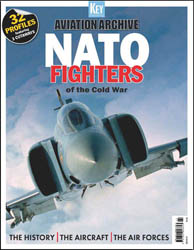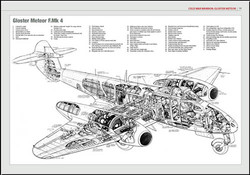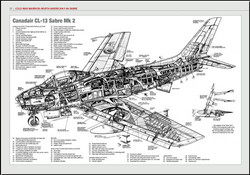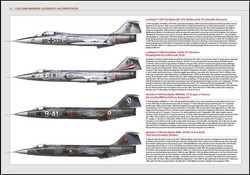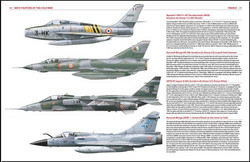|
Авторы книги: David Willis, Jim Winchester
Серия: Aviation Archive 67
Издательство: Key Publishing
Год выпуска: 2021
Формат: True PDF
Страниц: 100
Язык: английский
Размер: 16,3 Mb
Рост напряженности в Европе после распада военного союза Востока и Запада привел к созданию в апреле 1949 года Организации Североатлантического договора (НАТО) с целью защиты Западной Европы от угрозы с востока. Раздел континента между капиталистическим западом и коммунистическим востоком вдоль «железного занавеса» привел к переоснащению и расширению военно-воздушных сил Европы. В течение следующих 40 лет военно-воздушные силы НАТО и Варшавского договора противостояли друг другу, выпуская все новые поколения реактивных самолетов и готовясь к тому дню, когда холодная война станет «горячей». От «Сейбров» и «Тандерджетов», поставленных в 1950-х годах, через годы «Старфайтера» до «Торнадо» и «Fighting Falcons», которые поступили на вооружение в конце 1970-х годов, 67 выпуск «Авиационного архива» подробно расскажет о реактивных истребителях и ударных самолетах, развернутых НАТО по всей Европе в годы холодной войны.
Rising tension in Europe after the breakdown of the wartime consensus led to the creation of the North Atlantic Treaty Organization in April 1949, with the aim of defending Western Europe from any threat from the east. The division of the continent between the capitalist west and the communist east along the ‘Iron Curtain’ resulted in the re-equipment and expansion of the air forces of Europe. Over the next 40 years the air forces of NATO and the Warsaw Pact faced each other, introducing successive generations of jets and training for the day the Cold War became ‘hot’. From the Sabres and Thunderjets supplied as defence aid in the 1950s, through the years of the Starfighter to the Tornadoes and Fighting Falcons that entered service in the late 1970s, Aviation Archive 67 will detail the jet fighters and strike aircraft deployed by NATO in Europe throughout the years of the Cold War.
| 